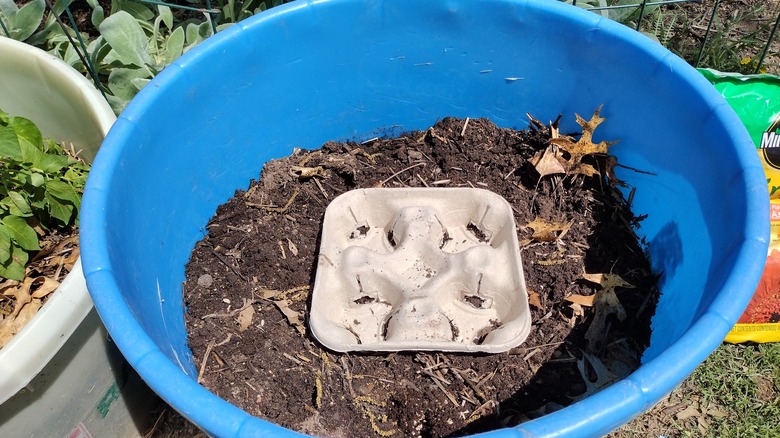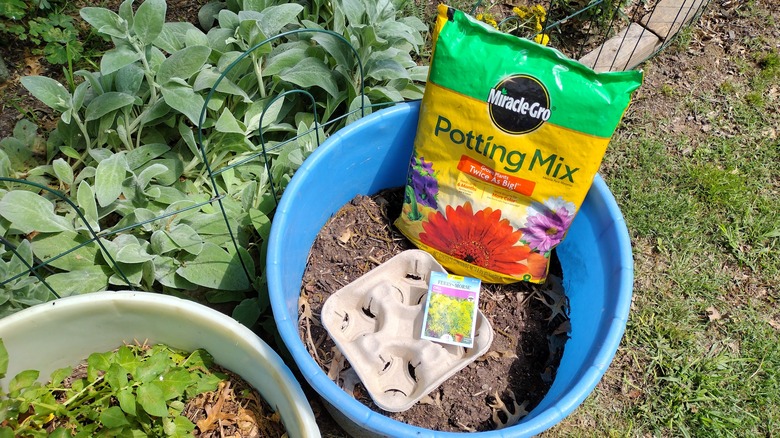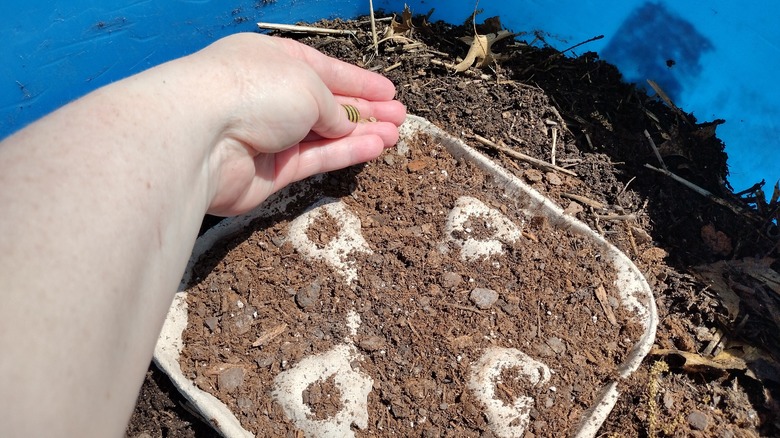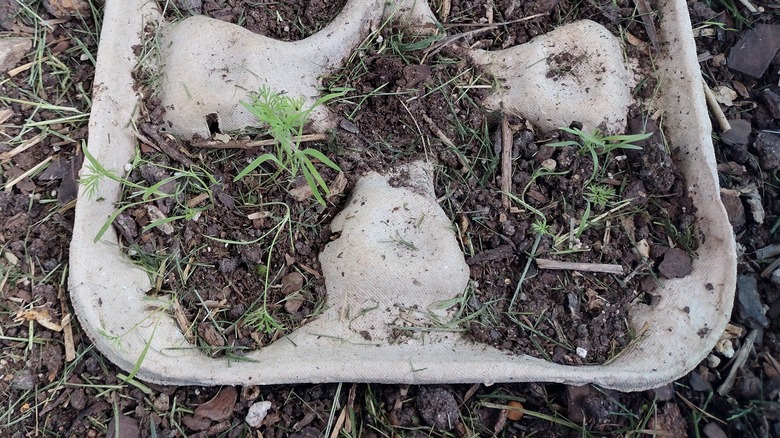We Tried Using Cardboard Drink Holders To Space Garden Seeds To See If It Works
As we transition from winter to spring, then spring to summer, my family has a tendency to acquire drink holders. I don't eat a lot of fast food, but when the days get warm, my husband and I get cravings for a certain cold chocolate treat. As a result, cardboard drink holders start accumulating in the recycling bin. Rather than send them off to be recycled, which is still better than sending them to the landfill, I wanted to think of a way I could use them in my garden. After measuring them, I discovered they offer common spacing for planting seeds.
Another reason I thought cardboard drink holders would be useful in the garden is because paper products help improve the soil. Worms love paper, including newspapers, brown paper bags, and cardboard. As they consume the decomposing paper products, worms aerate the soil and leave their castings (a nice word for worm poop), which fertilizes the soil. Even if you are growing in containers, the consistently moist soil required to germinate seeds will help the paper break down quickly in a raised bed or in-ground garden. All this sounds good in theory, but can using cardboard drink holders really help make planting easier?
What you need to use drink holders for planting
Clearly, this project does not require many supplies. Since I was experimenting, I used the mineral tubs I turned into raised beds last year. It was easy to keep a close eye on them and make sure they got enough sunlight and water. The purpose of this project was two-fold. First, I wanted to see if the cardboard drink holders really made determining the spacing for seeds easier, but I also wanted to see if it kept seeds from washing away from where I planted them.
To test both of these potential benefits, I decided the best indicator would be tiny seeds, so I opted to plant dill. I wanted to plant a few dill seeds 6 inches apart in my planter and see if they would sprout in place, or if they would get washed away elsewhere within the container. Naturally, I needed a cardboard drink holder (Oh, the burden of needing to get more milkshakes!). I should note here that cupholders come in different materials, so to ensure they breakdown quickly in the soil, I avoided anything that had a wax coating, or plastic options. It was also important to find cardboard drink holders that had slits for roots to grow through if the root systems get large before the paper is completely decomposed. I also decided to use fresh soil to start my seeds to give them the best possible chance of survival.
Planting seeds in drink holders
My drink holder planting experiment started with measuring. I grabbed the tape measure and discovered the corners of the holes were 6 inches apart while the centers were 4 inches. Because I was testing if the drink holder would help keep my seeds in place, I put the drink holder in my planter, leaving about half an inch or so above the soil level. This ensured there was plenty of soil in the drink holder while leaving a decent lip that should keep even tiny seeds from washing away.
I then filled my drink holder holes with soil mix, although a DIY seed starting mix would also work. Since I wanted my dill plants about 6 inches apart, I placed a pinch of seeds in each corner. Since these seeds were so tiny, they just needed a light sprinkle of soil on top to make sure they weren't buried too deep to sprout. I watered my seeds thoroughly using the shower setting on my hose-end sprayer to make sure I didn't displace the tiny dill seeds immediately after I planted them. However, this would soon be tested by Mother Nature, as we got several days of heavy rains once my cardboard drink holders were planted.
Did using drink holders work for spacing garden seeds?
When my seeds finally sprouted, I was really impressed that in spite of the deluge of rain we had between planting and germination, my little seedlings were almost all close to where I originally sprinkled them. I noticed one rogue sprout outside the cardboard drink holder, but the results for keeping seeds in place were overwhelmingly successful. As you can see in the photos, the heavy rains moved or compressed quite a bit of the soil, but those seeds kept their ideal spacing.
I think this would be particularly beneficial for square foot planting because there are many seeds and plants that should be planted 4 to 6 inches apart. When it's time to grow lettuce in my containers this fall or next spring, I'll save up some cardboard drink holders to help make determining the correct spacing easier while continuously working to improve my soil. By then, we should probably have a decent collection to upcycle in the garden thanks to our milkshake habit.



